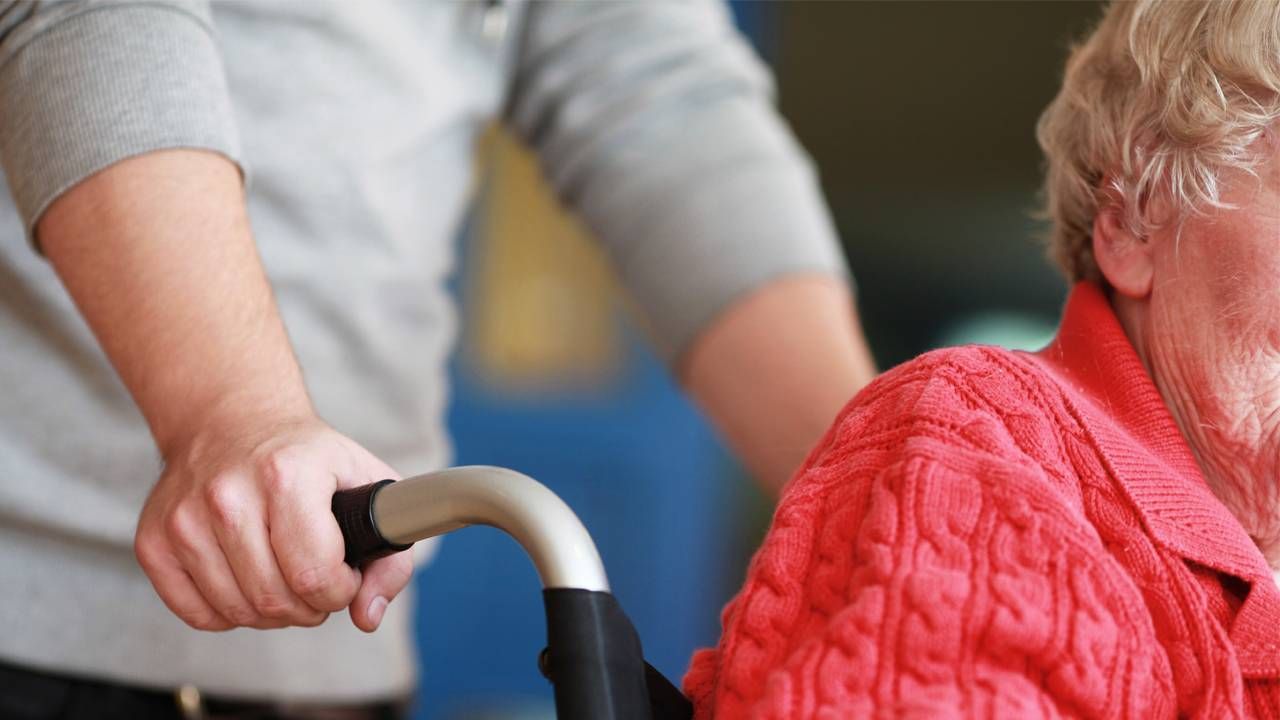OPINION: COVID-19 Highlights Problematic Caregiver Labor Practices
As coronavirus case numbers grow, essential workers assist homebound elders
Home health care workers are the forgotten workers of the pandemic, because laws protecting them do not include these caregivers who are classified as independent contractors. I have unintentionally been part of the problem, and I suspect many others have been, too.

Seven years ago, I hired an agency to place a home caregiver to help me care for my mother. For five years, I paid the agency monthly, but not until a caregiver asked me for help with an expense did I become aware of the reduced amount of the fee that actually went into her hands. I grew angry at the injustice of it all. Overwhelmed with attending to my mother's needs, I helped the caregiver but nothing more.
"I can't afford to miss work."
As the United States approaches record numbers of COVID-19 cases, affecting every section of the country, it will fall to these most essential of workers to assist homebound family members. They are unprotected as we rely on an increasingly aging population for a level of care and service founded on unfair labor practices.
Home Health Care Workers Feel Invisible
A survey published in the Journal of the American Medical Association in August captures what home health care workers wished we knew about their work. Based on 33 New York-based home caregivers, it's a snapshot of what these workers face across the country:
- While on the front lines of the coronavirus pandemic, they feel invisible.
- Home health care workers face a high risk for virus transmission.
- The amount and quality of information and supplies they receive from agencies is uneven and unreliable.
- They're being forced to seek health and safety information from sources outside of their agencies.
- Caregivers are making difficult trade-offs in their work and personal lives to care for others.
Early in the coronavirus pandemic, Memphis-based home health aide Sepia Coleman wrote about the stress of being a caregiver at MLK50: Justice Through Journalism. She was working with long-term care patients and veterans to do work that included handling catheters and tubes and changing incontinent people.
Our Commitment to Covering the Coronavirus
We are committed to reliable reporting on the risks of the coronavirus and steps you can take to benefit you, your loved ones and others in your community.
Read Next Avenue's Coronavirus Coverage
"My job is a gift from GOD," Coleman wrote. "I love what I do. I have been doing this kind of work for 24 years. I have had scabies, been bitten by bedbugs and fleas, and had maggots on me from doing home health. I will admit I have worked in some deplorable conditions."
Home caregiver wages are so low, one in five lives below the federal poverty line.
Working with two employers at that time, Coleman reported making $12.91 an hour for a 37.75 hour work week and $10.50 for another employer for 25 hours a week. Neither of these jobs pays a living wage of $15 per hour. "I can't afford to miss work," Coleman said.
The Case for $15 an Hour Pay
Why would $15 an hour be better? Well, the 1963 March for Jobs and Freedom demanded a $2 an hour federal minimum wage, which would be about $15 in today's dollars. Making this shift to $15 an hour would give 33 million workers a raise, and many of those who would benefit are women and African Americans.
We expect these home caregivers to bring their humanity into these intimate family situations, and they always deliver. Coleman said her class of workers are the "lowest paid" with no union rights where she lives, and felt she had no voice in this crisis.
When the Fair Labor Standards Act of 1938 (FLSA) limited the workweek to 40 hours and established federal minimum wage and overtime requirement, these protections did not include domestic, agricultural and service occupations, predominantly filled by racial and ethnic minorities.
In 1974, the law was expanded to cover domestic workers. But those providing companionship services, such as home health care workers, who are primarily women of racial and ethnic minorities, were exempted from the protections to receive a minimum wage or overtime pay whether they worked for an individual employer or home health care company.
In 2015, the FLSA was reworked with the intent to include home health caregivers. Nevertheless, many workers remain unprotected because the law does not apply to independent contractors, which is the way a lot of home health caregivers are labeled.
According to a 2018 report from PHI, a group advocating for quality direct care jobs, home caregiver wages are so low, one in five lives below the federal poverty line, compared with 7% of U.S. workers. More than half rely on some form of public assistance, including food stamps and Medicaid.
There were about 832,000 home health care workers in 2018, and this number is projected to grow to 1.1 million in 2028 because of the nation's growing older population. The population of adults 65 and older stands at about 54 million but is expected to grow to nearly 84 million in 2050.
Employment laws are supposed to protect the worker but wind up giving the advantage to business owners and families who hire them, leaving home health caregivers who are primarily people of color at a disadvantage.
Just as sick leave policies privilege white workers who are overrepresented in the upper rungs of the employment ladder and stay-at-home orders fail to consider the lived experience of essential workers who are largely from racial and ethnic minorities, home caregivers suffer.
While we tend to the needs of people who are older and sick, especially in the throes of this pandemic, we must take care of those who care for us.


